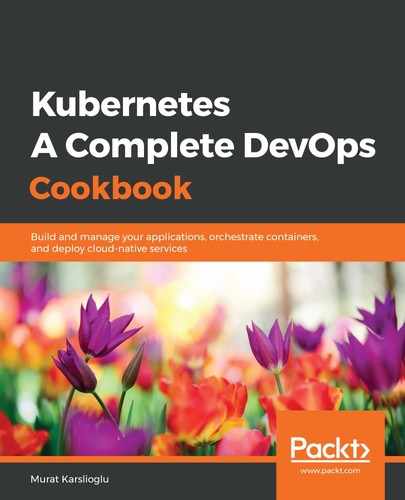This recipe will take you through how to get a fully functional Kubernetes cluster with fully customizable master and worker nodes that you can use for the recipes in the following chapters or in production.
Let's perform the following steps:
- Create a domain for your cluster.
It is a cloud management best practice to have subdomains and to divide your clusters with logical and valid DNS names for kops to successfully discovery them.
As an example, I will use the k8s.containerized.me subdomain as our hosted zone. Also, if your domain is registered with a registrar other than Amazon Route 53, you must update the name servers with your registrar and add Route 53 NS records for the hosted zone to your registrar's DNS records:
$ aws route53 create-hosted-zone --name k8s.containerized.me
--caller-reference k8s-devops-cookbook
--hosted-zone-config Comment="Hosted Zone for my K8s Cluster"
- Create an S3 bucket to store the Kubernetes configuration and the state of the cluster. In our example, we will use s3.k8s.containerized.me as our bucket name:
$ aws s3api create-bucket --bucket s3.k8s.containerized.me
--region us-east-1
- Confirm your S3 bucket by listing the available bucket:
$ aws s3 ls
2019-07-21 22:02:58 s3.k8s.containerized.me
- Enable bucket versioning:
$ aws s3api put-bucket-versioning --bucket s3.k8s.containerized.me
--versioning-configuration Status=Enabled
- Set environmental parameters for kops so that you can use the locations by default:
$ export KOPS_CLUSTER_NAME=useast1.k8s.containerized.me
$ export KOPS_STATE_STORE=s3://s3.k8s.containerized.me
- Create an SSH key if you haven't done so already:
$ ssh-keygen -t rsa
- Create the cluster configuration with the list of zones where you want your master nodes to run:
$ kops create cluster --node-count=6 --node-size=t3.large
--zones=us-east-1a,us-east-1b,us-east-1c
--master-size=t3.large
--master-zones=us-east-1a,us-east-1b,us-east-1c
- Create the cluster:
$ kops update cluster --name ${KOPS_CLUSTER_NAME} --yes
- Wait a couple of minutes for the nodes to launch and validate:
$ kops validate cluster
- Now, you can use kubectl to manage your cluster:
$ kubectl cluster-info
By default, kops creates and exports the Kubernetes configuration under ~/.kube/config. Therefore, no additional steps are required to connect your clusters using kubectl.
